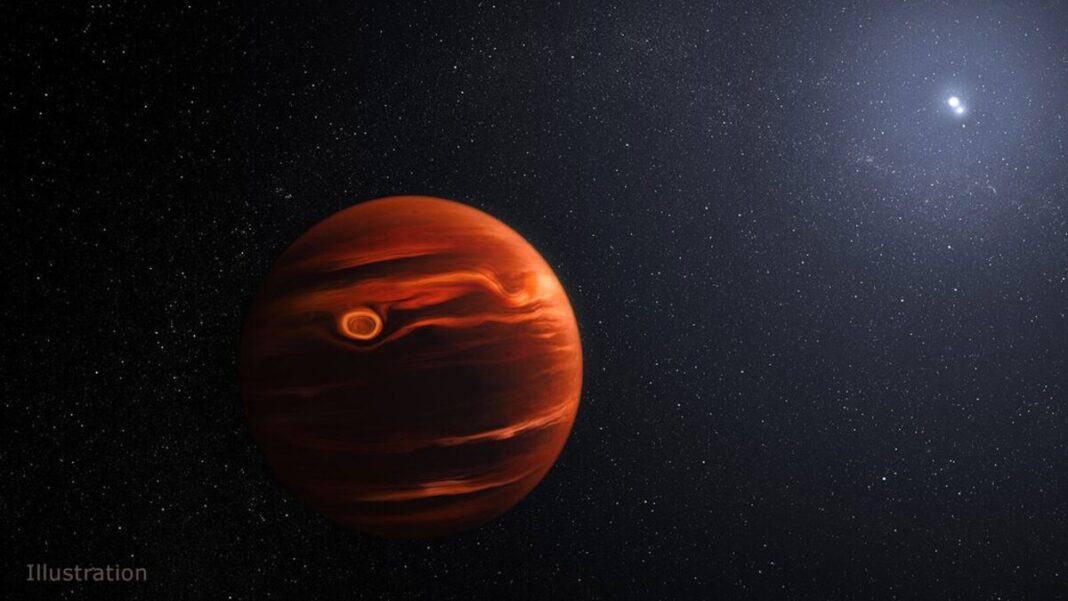UNITED STATES: The James Webb Space Telescope has made a groundbreaking discovery. It has found a planet that orbits two stars and completes its orbit over 10,000 years.
The planet, named VHS 1256 b, is located 40 light-years away from Earth and is four times farther from its stars than Pluto is from our Sun. Its distance from its stars makes it an ideal target for the James Webb Space Telescope because the planet’s light is not mixed with light from its stars.
The James Webb Space Telescope’s unique features revealed that VHS 1256 b has silicate cloud features and an atmosphere that constantly rises, mixes, and moves during its 22-hour day.
The most changeable planetary-mass object to date, according to the telescope, is caused by the atmosphere’s ability to push hotter material downward and pull cooler material upward.
Analysts from the James Webb Space Telescope discovered that the higher up in VHS 1256 b’s atmosphere, where the silicate clouds churn, temperatures can reach a scorching 830 degrees Celsius.

The spectrum of the discovered silicate dust grains, both big and tiny, is displayed by the telescope. VHS 1256 b is a young planet, only 150 million years old, and researchers speculate that it will continue to change and cool over billions of years.
Brittany Miles of the University of Arizona, who led the observation, stated that “while silicates have been found, more research will be necessary to better understand which grain sizes and shapes correspond to different kinds of clouds.”
“This is just the start of a significant modeling effort to suit Webb’s intricate data; it is not the last word on this planet,” Miles added.
Astronomers examined the data known as spectra collected by two instruments on board the James Webb Space Telescope—the Near-Infrared Spectrograph (NIRSpec) and the Mid-Infrared Instrument (MIRI)—to learn more about VHS 1256 b. As the planet orbits its stars at a great distance, it was directly detected.
Beth Biller, a co-author from the University of Edinburgh, said that “Its atmosphere’s smaller silicate grains resemble smoke particles more than anything else. The larger granules may resemble heated, tiny sand grains more than anything else.”
In contrast to more massive brown dwarfs, VHS 1256 b has a low gravity, which allows its silicate clouds to form and persist higher in its atmosphere, where the James Webb Space Telescope can see them.
The discovery of VHS 1256 b is a remarkable achievement and an important step in understanding planetary evolution in our universe.
The James Webb Space Telescope’s ability to observe the planet directly despite its distance from its stars is a significant breakthrough, and there is still much to be learned about this unique planet.
The data gathered by the telescope will undoubtedly lead to further discoveries and a better understanding of the universe we live in.
Also Read: NASA’s ShadowCam Sheds Light on Lunar South Pole with Latest Photograph



